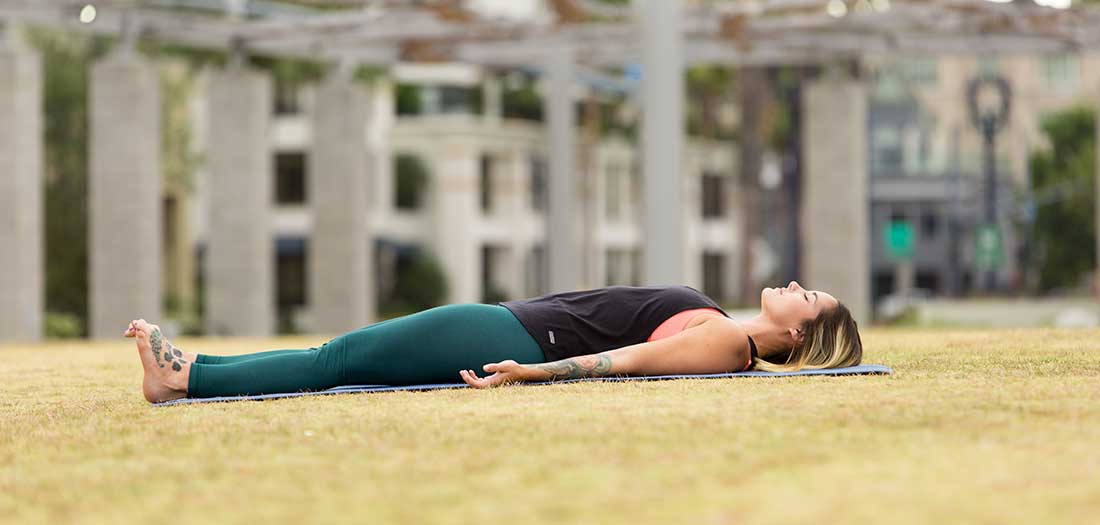Last updated: September 2023 (originally published: July 2016)
Stress is an unavoidable part of life, which is why learning effective coping mechanisms and stress-reduction techniques is so vital. While stress comes in countless forms and can be both positive (e.g., exercise) and negative (e.g., feeling overburdened at work), and both acute (e.g., visitors staying in your home) and chronic (e.g., financial worries), it’s your responses to stress that determine whether you feel “stressed out” for long stretches of time or are able to move through those feelings effectively while minimizing the negative impact on your quality of life and health.
One of the best and most accessible tools to decrease stress is to connect with your breath. During the stress response, breath becomes light and shallow. When this happens, it is important to bring awareness to the breath to help refocus the mind. Conscious deep breathing ignites the relaxation response, which has the potential to trigger physiological changes in our bodies, such as https://www.ncbi.nlm.nih.gov/pmc/articles/PMC6127488/reduced blood pressure and psychological stress (Zaccaro et al., 2018; Chaddha et al., 2019)
These simple breathing exercises for stress reduction, which can be done anywhere, can help melt the stressful feelings away. Breathing works best when you wear comfortable clothes that are not restrictive in the torso. If you don’t have much time, try to practice these breathing techniques for one to five minutes. When you can, practice these techniques for 10 to 15 minutes or even longer to fully explore their tremendous benefits.
1. Supine Diaphragmatic Breathing

Lie on your back in a comfortable position and place your right hand on your chest and your left hand on top of your diaphragm, which is located just below your lungs. Breathe through your nose, allowing the abdomen to expand with your breath. The goal is to focus the breath into the belly without the chest rising. You can also do this exercise while seated in a chair.
2. Matching the Inhale and Exhale Breaths

Sit in an upright position with a neutral spine, on the floor or in a chair. Begin to inhale through the nose and mentally count to five. Next, exhale through the nose, matching the breath to the same count of five. Be sure to initiate the breath with the diaphragm and visualize the breath flowing above and below the diaphragm, filling the entire torso. Once a five-count breath is achievable, increase the count to six, seven and eventually 10 seconds.
3. Three-Part Breath

Sit in a chair or on the floor in an upright position with a neutral spine. Begin by taking three short inhalations through the nose. You want the inhalation to be natural and not rapid or forced. Once you’ve inhaled the three breaths, pause for a moment and then release with one deep exhale. You can release the breath through your mouth or nose. Pause at the completion of the exhalation and then repeat. Next, reverse the direction. Take one deep inhale through the nose, ballooning the diaphragm. Pause at the peak of the inhalation and then release three short exhalations either through the nose or the mouth. Pause at the completion of the exhalation and then repeat. Practice this for 10 rounds or for several minutes.
4. Alternate Nostril Breathing

Sit in an upright position with a neutral spine, on the floor or in a chair.. Softly block the left nostril with your thumb and inhale through the right nostril. Block the right nostril with the ring finger and then exhale through the left nostril. Inhale through the left nostril. Block the left nostril and then exhale through the right nostril. Inhale through the right nostril. Continue this pattern for 10 rounds.
5. Jaw Release – Modified Lion’s Breath

Sit in an upright position with a neutral spine, on the floor or in a chair. Take a deep inhale through the nose, expanding the abdomen, and at the peak of the inhalation, exhale through the mouth, opening the mouth wide and stretching the jaw with an “ahhh” exhalation. Repeat this for several breaths.
6. Progressive Muscle Relaxation

Lie comfortably on the ground. Make yourself nice and cozy, placing a blanket over the body if needed. You can either practice progressive muscle relaxation on your own or use a guided meditation (there are lots of free guided meditation apps).
Here is an easy way to guide yourself through this practice—start by relaxing with several deep breaths. Then, inhale, contracting the muscles of the feet and scrunching the toes, and then exhale while releasing the contraction. Inhale and activate the calf muscles. Exhale and release the tension. From here, you can work each muscle group. You want to work with a synergistic relationship between the breath and activation of the muscles. It is best to start from the feet and move upward, or from the head and move downward through the toes. You can work both sides of the body simultaneously, or one side of the body at a time.
If you are interested in learning more about stress management and breathwork, check out these three continuing education courses:
- Sleep, Stress Management and Recovery (0.4 ACE CECs)
- Mental and Physical Exercises for Long-Term Stress Management (0.1 ACE CEC)
- Improvement Performance through Breathwork (0.2 ACE CECs)
 by
by 









